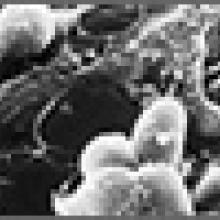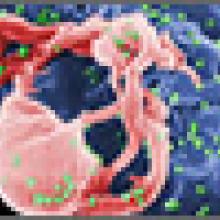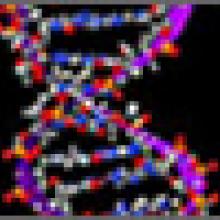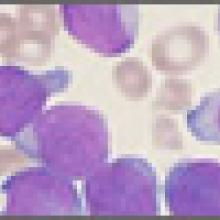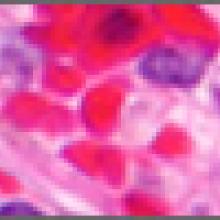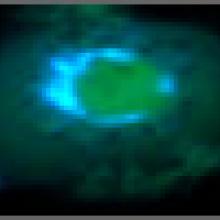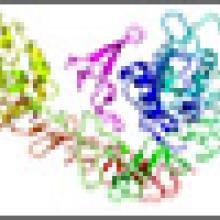Newsroom
There's a reason your mom was so insistent you eat your broccoli. Among other things, broccoli has repeatedly shown its potential to fight off the development of cancer. This effect is accomplished, at least in part, by the enzyme myrosinase and the anti-inflammatory effects of a chemical found in… more
Broccoli is a special vegetable. Besides being packed with vitamins, it has repeatedly shown a capacity to fight off cancer. Until recently, why broccoli had this effect remained unknown. A recent study in the American Cancer Society's Journal of Medicinal Chemistry reveals that isothiocyanates (… more
The development of a model of the breast ductal system on a microchip represents a major step forward in breast cancer research. The “ breast-on-a-chip” model allows researchers to more accurately see the interaction that breast cancer therapies have with their environment, and how these affect… more
Human Immunodeficiency Virus (HIV) causes severe repression of the body’s capacity to heal and fight off infection. As a result, HIV patients are at a greater risk for developing some cancers. For HIV positive patient, physicians must pay special attention to their cancer treatment, since… more
Most cancer deaths, about 90%, are caused by cancer that has metastasized, or spread throughout the body. Blocking this step is a key goal of many cancer therapies. For this reason, researchers at the University of East Anglia were excited to report the discovery of a gene that appears directly… more
Hepatitis B (HBV) and hepatitis C (HCV) are both viral diseases that cause inflammation of the liver. Of the 40 million HIV patients in the world, approximately 6-9 million are also carriers of one of the chronic hepatitis viruses. Since the development of highly active antiretroviral therapy (… more
The enzyme Rad18, with the help of the Cdc7 protein, directs DNA repair machinery to sites of DNA damage. DNA repair is important in healthy cells but this repair can interfere with certain forms of cancer treatment. If cellular DNA is severely damaged, the cell will often die instead of… more
B-cell acute lymphocytic leukemia is an aggressive condition where the body over-produces B-cells. A study recently published in Blood has linked this condition, which primarily affects children, with an overabundance of the Fmn2 gene and protein. The sooner abnormal cell activity is detected, the… more
The IDH1 gene is directly involved in a cells' ability to metabolize food. It is also the most commonly mutated metabolic gene in human cancer cells. Scientists at the UNC Lineberger Comprehensive Cancer Center have now uncovered how this mutation changes the body's chemistry and supports the… more
The Kaposi's Sarcoma Virus been linked with several different types of cancer. The mechanisms that cause cancer to form after infection are still being discovered. A recently published article in the journal Science reveals a new piece of the puzzle. Once the Kaposi's sarcoma virus invades a… more
Macrophages are naturally occurring cells of the immune system, but different types of macrophages have different activities in the presence of cancer cells and the results are not always so good. M1 macrophages work to fight off cancer growth by activating immune cells that target the malignant… more
Viruses have become one of the more surprising combatants against cancer. Although people often think of viruses as agents that make them sick, researchers have been developing viruses that attack cancer cells and spare healthy cells. These viruses are called oncolytic viruses, and the specificity… more
In a recent latest news article, CancerQuest presented research describing the anxiey patients often suffer when presented with a false-positive reading of a mammography. Much of this stress is due to the fact that the patients must then undergo additional screenings, which often include biopsies… more
Cigarette smoking has been linked to at least 18 different types of cancer. Some of the worst cancer-causing agents are called polycyclic aromatic hydrocarbons (PAH). These chemicals bind to DNA, causing mutations that can lead to cancer.
In the first study of its kind, researchers… more
Measles is not typically thought of in positive ways. Even with the availability of a vaccine against the virus, over 100,000 people die from measles infections each year. Researchers at the University of Texas and the Mayo Clinic have shown how proteins on the surface of the… more
Early detection is key in the treatment of cancer, thus it is recommended that women begin having yearly mammograms starting at age 40. It is important to know, however, that a mammography is not a formal diagnosis. There may be false-positives, in which an abnormal mammogram does not, in fact,… more
Protein and steroid hormone growth factors are a key element in the growth of many different types of cancer. For this reason, many therapies work by preventing growth factors from binding to their receptors. Gefitinib (Iressa®) is an inhibitor of the epidermal growth factor receptor. It is… more
Traditional cancer researchers investigating the genetics of the disease have focused on protein-coding genes (tumor-suppressors and oncogenes). The majority of our DNA does not encode proteins and the functions of this large amount of material has only recently received a great deal of… more
A new analysis published in the Journal of the National Cancer Institute projects that in the year 2020, medical costs associated with cancer will reach 158 billion dollars. The value represents a 27% increase from current costs. The model assumes that the U.S. population ages as currently… more
The generally accepted view is that cancer forms in a step-wise progression. Changes (mutations) accumulate gradually over time, making the cells progressively more abnormal. Eventually, cancer cells arise. The process can take years to occur.
Researchers working with new DNA… more





